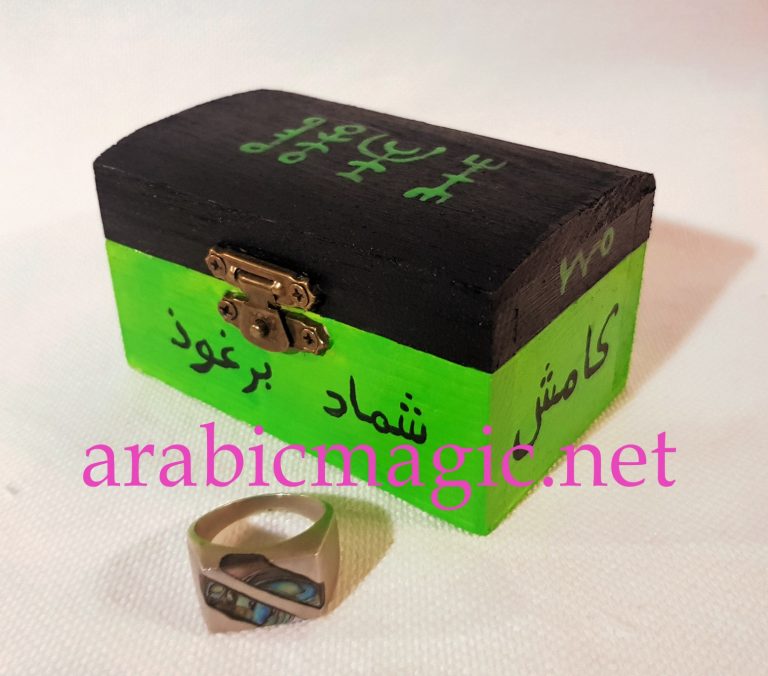The Jinn’s Meal – Ritual for Healing
In traditional North African magic, in the presence of a mysterious illness that does not lend itself to normal treatment, the intervention of djinns is taken into account. It is believed that whether physical or mental illness, it can be caused by the influence of a jinn on a person as a result of possession. If this is the case, appropriate treatment involving either exorcism or propitiation should be undertaken. In addition to being the cause of various sufferings, jinn are also known as healers, capable of curing diseases caused by other jinn or of natural origin. In other words, when nothing else has worked and proved ineffective, it does not hurt to seek help from the jinns. For this purpose, there are various practices, some of which can be performed by the affected person, and others only by dedicated sorcerers or healers.
This highly complex Moroccan rite requires the preparation of a symbolic meal as an offering to the jinn and is intended to cure ailments caused by them. Their symptoms usually include fever, hallucinations, drowsiness, restlessness, and body aches, and the sufferer may talk to themselves or to unseen visitors.
In addition to the relatives of the patient, who will perform the ritual actions, the participation of four women is also required. One of them, who will play the main role, must be old or past a critical age, and the other three women must be married, and none of them must have had a previous marriage or remain a widow. It is considered even better if no one has lost a child.
Each of the married women must bring two handfuls of flour, which is mixed and put in a white cotton cloth. It is tied to a bundle, which is incensed with the smoke of white benzoin, and then placed on the head or next to the pillow of the sick person to remain overnight. In the morning, the old woman unties the cloth, taking three handfuls of flour with which she kneads a small bread without salt and on which seven grains of barley are placed. With the remaining flour, the relatives knead a second loaf, without leaven, but with salt, after which both loaves are baked. The next step of the ritual requires the procurement of five types of fish, one of each type and a separate quantity sufficient to feed the patient’s family. The five fish are cooked in a new and unused vessel with oil, onion, and pepper, but without salt. After the dish is ready each of the fish and sauce is given a morsel to be eaten by the one affected. A little of the sauce should be rubbed on his wrists, eyebrows, knees, and elbows. The old woman then puts the bread with the barley grains in a basket, together with the vessel with the fish dish, which must be decorated with four small pieces of cloth – white, black, red, and yellow. To all this, three small dolls depicting a man, a woman, and their daughter are added. A silver coin is dropped into the dish with the dish, saying:
“Forgive us if we forgot something you like.
Here’s money for you to buy whatever you want!”
The attendants then keep vigil in the home, and the old woman puts a second silver coin in her mouth and thus must take the offerings to a desolate area – a remote area, a seashore, or a place reputed to be inhabited by jinn. On her way there and back, she must not utter a word or turn back, and must keep the coin in her mouth the whole time. At the place chosen, everything from the basket is left there, and if dogs or wild animals are attracted by the food, they should not be driven away, as it is taken as a favorable omen. On the way back, the woman has to collect seven pebbles on the way, and when she gets back to the house she throws them one by one at the threshold since she has no right to knock, and in this way, she signals to be open to her. She can’t even speak until she steps inside. Only then she removes the coin out of her mouth. During this time, with the remaining amount of fish, the relatives prepare a second dish, but this time salt is added to it. The cooked fish, together with the remaining second bread with salt, is eaten by the whole household. If the sick person is a child, then only his closest relatives and other children can eat. Also, if another member of the family does not feel well, eating the salty dish will have a beneficial effect on him.©
This article and all information published on this site are copyrighted. Any form of copying the texts or parts of them is prohibited. This site and all the information in it are protected by Digital Millennium Copyright Act. Any violation of this rights will be automatically detected and we will contact for assistance and legal action to your online provider and domain name registrar.
Don’t copy, be creative!






